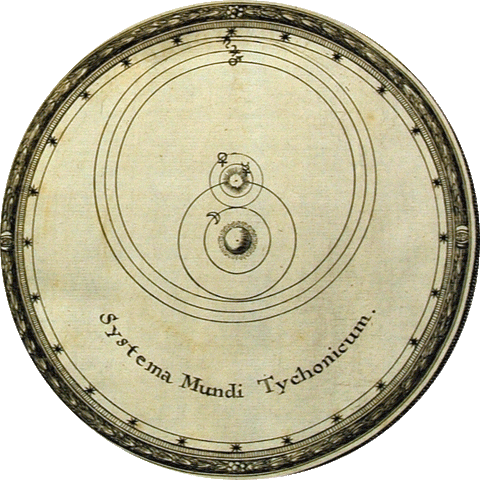Praecipua Systemata Mundi - Important World Systems

Praecipua Systemata Mundi or Important World Systems is a simple yet elegant chart found in Johann Zahn's Specula Physico-Mathematico-Historica published in 1696. By presenting diagrams of the three most important astronomical models in close proximity and framing the diagrams within a large cartouche, Zahn has created a classic data graphic that is pleasing to the eye and allows the viewer to compare and contrast the most important cosmological models known at that time.

The top diagram outlines the geocentric model, with Earth as the center of the universe and all other objects orbiting around it. Developed by ancient philosophers and scientists this model was the accepted plan of the universe for more than 2000 years. Through the work of the Egyptian astronomer and mathematician Claudius Ptolemy (c. 100 - 168) it became known as the Ptolemaic system. In this model, the order of the objects that revolved around the Earth is the Moon, Mercury, Venus, the Sun, Mars, Jupiter and Saturn. At the edge of the system are the crystalline heaven and first mover spheres.

At the lower left is the Copernican system (heliocentric) where the Earth and the other planets move around the Sun. Nicolaus Copernicus (1473 - 1543) was a Polish mathematician and astronomer. Copernicus developed his heliocentric model for 30 years but it wasn't formally published until the year he died.

Around 1583 Danish astronomer Tycho Brahe (1546 – 1601) attempted to reconcile the geocentric and heliocentric models. In the Tychonic system, found at the lower right, the Earth is located in the center, the Sun rotates around the Earth while the other planets rotate around the Sun.
Images from the Linda Hall Library Digital Collections.
